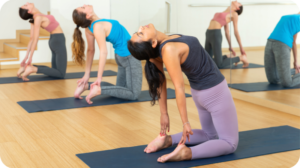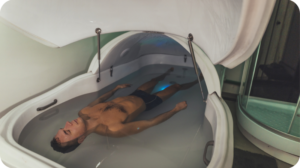Joint health is a gateway to fitness, just as joint diseases such as arthritis can lead to an unhealthy, sedentary lifestyle. The trick is to keep moving, but moving in ways that don’t damage—or exacerbate existing damage in—joints. The good news is that a joint-focused physical activity program is a wonderful whole-life practice.

The goals when exercising with a focus on joint health should be maintaining flexibility to ensure joints are properly lubricated, emphasizing low-impact aerobic exercise that keep joints mobile, limits cartilage deterioration, and helps maintain a healthy weight, and full-range muscle-strengthening exercises (usually involving weights) that build up the supporting structure around joints.
The Joint-Health Fitness Routine
Ensuring your joints are as protected from injury as possible, or dealing with joints that are already damaged, means following a commonsense step-by-step fitness plan.
- Supported stretching and warm up. You’ll do your joints a solid if you make warm-up stretches a precursor to any exercise—even a long brisk walk. Stretching is also an excellent way to take regular ten-minute breaks from your computer screen. Basic, whole-body stretches are the most effective for joints. Warm up with shoulder shrugs, and slow side bends. Then try a lengthening stretch by slowing reaching toward the ceiling and coming up on your tiptoes. Gently move to more challenging stretches, like lowering down into a deep, slow lunge. Don’t forget simple range-of motion warm-ups like slowly and carefully rotating your hands and wrists in circles both ways, and doing the same for each ankle.
- Brisk aerobic activity. The ideal amount of brisk activity is about 150 minutes per week, although any activity is better than none. Where joint health is concerned, low- or no-impact exercises are best. Swimming and bicycling are examples of joint-supporting workouts that are also fun and engaging. Keep in mind that the calories burned during aerobic exercise help joints by ensuring a healthy weight, which translates to less of a load on joints. Lastly, it’s especially important to focus on whole-body exercises that strengthen the core, or add in specific core-strengthening exercises. These will stabilize your posture and limit the amount of stress placed on joints in day-to-day life.
- Mild weight training. Don’t look to bulk up by building muscle mass. Instead, weight train with light weight and high reps. Shoot for three days per week, and develop an achievable routine of two to three upper body, and two to three lower body exercises. Examples include weighted leg extensions, half squats, standing barbell curls, and lat pulldowns.
Be aware that some exercises combine elements of number 1 and 2 above. These include yoga, tai chi, and band exercises.
Exercising with Compromised Joints
If you already have arthritis or damage to your joints from a sports injury or accident, you’ll need to be more careful in how you approach a regular exercise routine. The CDC promotes what they call the SMART plan, for arthritis sufferers. However, these guidelines are just as relevant for any comprised joints, regardless the underlying condition:
- Start low, go slow. Be cognizant of your limitations. You can always build up an exercise routine, but if you jump into a full-blown workout to push your limits, you may produce the opposite effect—joint overuse or injury that sidelines you for a significant period of time.
- Modify activities when the condition flares up. Don’t simply push through pain and stiffness. Use moist heat on the joint and NSAIDs for pain, and limit activities to range-of-motion stretching and low-impact movement.
- Activities appropriate for joints. Regardless of the everyday fitness activities you choose, always seek to minimize impact and twisting. The more supported joints are, the better.
- Recognize safety. This means accommodating joint conditions in the activities you choose, and where you choose to do them. Brisk walking on a grass or rubber track would be considered safe for arthritis sufferers; hiking an uneven, rock-strewn path is a less safe choice. This particular rule is why joining an exercise class done on padded mats or floors is a good starting point for anyone trying to rehabilitate joints or get into shape while dealing with joint diseases or conditions.
- Talk. By this, the CDC means consult a physician, therapist, or similar professional before undertaking any exercise regimen. A pro will likely help you maintain proper form in the exercises you do, and may alert you to activities you should avoid.
Whether your joints are healthy or not, you should always consult your primary caregiver prior to beginning a new workout routine. Learn more about joint health and dealing with joint pain in our previous post, “Natural Treatments for Joint Pain.”





